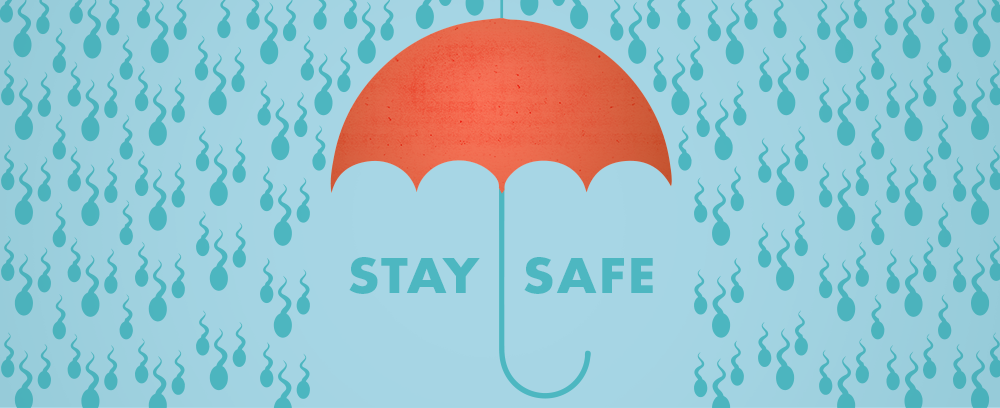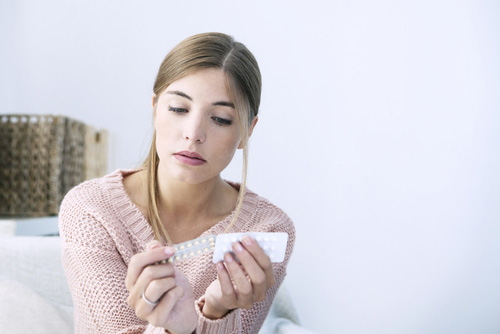
We are having a special clinic on September 19th from 1pm to 5pm in celebration of our new long term reversible birth control. Find out more on our Special Clinic page!
All Birth Control Options
Methods marked with a ⊗ are not available at our clinic at this time.
Birth control is used to prevent pregnancy. If you are thinking about becoming sexually active or if you already are, you need to figure out your birth control plan.
There are so many options and most are available at our clinics. Together, we can find out the best option for you and your body.
-
- Abstinence
- Withdrawal
- Breastfeeding
- Diaphragm
- Emergency Contraceptive Pills (ECPs)
- Progestion-Only Pills (POP)
- Spermicides
- Sponge
- Vaginal Ring
-
- Female Condom
- Female Sterilization ⊗
- Fertility Awareness Based Methods (FABs)
- Implants
- Injectible (Shots)
- Intrauterine Device (IUD)
- Male Condom
- Male Sterilization ⊗
- Patch
- Pills

Hormonal Birth Control
Hormonal birth control is the most common. This includes ‘The Pill’, a shot, stick-on patches, vaginal rings and birth control implants.
Reference: www.fpntc.org
Birth control pills are known as oral contraceptives. These pills prevent the release of an egg from an ovary. Basically, that means that the sperm will have nowhere to go to create a pregnancy. These pills usually come in a pack of 21 with 7 ‘reminder pills’ (placebos). If you decide to start a birth control pill, it needs to be taken every day at the same time of day to be effective. Your period will start during the placebo pills and they are there to make sure you don’t get off schedule or forget to take them. There are many brands to choose from and some have different side effects from others. Make an appointment to discuss your best choice.
Also known as the Depo Shot, short for Depo-Provera. This shot is given once every 3 months and is highly effective in preventing pregnancy. The shot is a good option if you think you would forget to take a pill every day. There can be multiple benefits to getting the shot, including reduced/no periods after the second injection. A little needle prick is nothing compared to a pregnancy!
This type of birth control is a small, thin piece of plastic that is inserted into your arm. Although it sounds painful, this can be effective for up to 4 years. Irregular bleeding is very common for the first 6-12 months, but after that, periods could go away completely. And if you decide that you do want to get pregnant, it is easy to get removed!
A vaginal ring is a soft, flexible piece of plastic and it has hormones in it that prevent eggs from being released. A prescription is needed for a ring. It is placed in your vagina for 3 weeks and then removed for the 4th week. That week will be when your period starts. The ring does not protect you from STDs and has about a 2% failure rate when used correctly.
The size of the patch is 1-3/4 in. It containes hormones including estrogen and progestin that are similar to the hormones naturally produced by a woman’s body. When using the patch, these hormones enter a woman’s bloodstream through the skin. The hormones in the patch work by stopping the body from releasing anegg, so no egg can be fertilized. The hormones in the patch also work by thickening the cervical mucus (liquid at the opening of the uterus) which can stop sperm from getting into the uterus.
Levonorgestrel intrauterine system (LNG IUD)—The LNG IUD is a small T-shaped device like the Copper T IUD. It is placed inside the uterus by a doctor. It releases a small amount of progestin each day to keep you from getting pregnant. The LNG IUD stays in your uterus for up to 5 years. Typical use failure rate: 0.1-0.4%.
Progestin-only pills (POP), sometimes called “minipills,” contain only one hormone — progestin. Progestin stops the body from releasing an egg, so no egg can be fertilized. Progestin also causes the cervical mucus (liquid at the opening of the uterus) to thicken, which can stop sperm from getting into the uterus.
Emergency contraceptive pills (ECP) are used AFTER sexual intercourse. ECP works primarily by stopping a woman’s body from releasing an egg (ovulation), so there is no egg present to be fertilized. Emergency contraception may prevent pregnancy, but it will not stop an already-established pregnancy or harm a developing fetus.
Non-hormonal Birth Control
Non-hormonal birth control includes Abstinence, Withdrawal (Pulling Out), Breastfeeding, Diaphragm, Spermicides, The Sponge, IUDs and more.
Reference: www.fpntc.org
Sexual abstinence for pregnancy prevention is defined as not having any penis-to-vagina contact during sexual activity. Client’s who use abstinence should be encouraged to talk with their partner(s) about this decision and decide in advance what sexual activities are a “yes” and what activities are a “no.” Those who use abstinence should be aware that using drugs and/ or alcohol may influence sexual decisions and increase the risk of pregnancy and sexually transmitted infections (STIs). Abstinence is a choice people can use at any time and at any age.
Withdrawal prevents fertilization by not allowing semen (and sperm) to enter the vagina; sperm does not reach the egg. It is also called Coitus Interruptus.
Breastfeeding after having a baby may work to prevent pregnancy for up to six months post-partum if breastfeeding is the baby’s only source of food day and night and her periods have not returned. Around-the-clock stimulation of the breast stops the release of hormones that are necessary for the woman’s body to release an egg (for ovulation). This helps prevent a pregnancy.
The diaphragm is a dome-shaped rubber (latex) cup with a stiff rim. It’s used with a special gel or cream that contains a spermicide (a substance that kills sperm). The diaphragm and spermicide are inserted together into a woman’s vagina and over her cervix to keep sperm from entering her uterus.
Spermicides contain chemicals that kill sperm. In the U.S. nonoxynol-9 is the active chemical used in spermicides to kill sperm. Vaginal spermicides come in several forms (gel, foam, cream, film, suppository, or tablet). Some spermicides are used along with a diaphragm (i.e., gels, creams) or condoms but they can also be used alone.
The Today® sponge is a small, one-size, disposable (single use), over-thecounter method of birth control for women. It contains spermicide (a substance that kills sperm) to prevent pregnancy. The sponge is inserted into the vagina, placed in front of the cervix, as a barrier that keeps sperm from entering the uterus. The smooth side of the sponge has a woven loop of polyester fabric that provides easy removal of the sponge.
This IUD is a small device that is shaped in the form of a “T.” Your doctor places it inside the uterus to prevent pregnancy. It can stay in your uterus for up to 10 years. Typical use failure rate: 0.8%.
Both types of IUDs are placed inside the uterus by a trained health care provider. Both the Cu-IUD and the LNG-IUD primarily work by affecting the way sperm move and stop sperm from getting to the egg. The LNG-IUD also works by thickening the cervical mucus — the liquid at the opening of the uterus — to stop sperm from getting in the uterus. The LNG-IUD also prevents ovulation in some women, in some menstrual cycles. These devices do not interrupt an implanted pregnancy.
The male condom is a thin sheath that fits over the erect penis. Most condoms are made from latex (rubber) or polyurethane (synthetic condoms. For the prevention of pregnancy, it works as a physical barrier to stopsperm from getting into the vagina. For the prevention of transmission of STIs (sexually transmitted infections) and HIV infection, condoms work as a barrier between partners so body fluids (i.e., semen, blood, vaginal secretions, and saliva) are not shared during sexual activity.
The female condom (FC) is a soft, loose-fitting sheath (pouch)that works as a physical barrier that lines the vagina during sexual intercourse to keep sperm from entering the vagina. The FC has a soft ring at each end of the pouch. The closed end of the pouch (along with a ring) is used to put the condom into the vagina to hold it in place. The open end stays outside of the vagina. The open end ring is used as a guide to insert the penis into the vagina. The FC also works as a barrier between partners that provides protection from sexually transmitted disease (STDs) including HIV infection.
Male sterilization, or vasectomy, is a simple surgery in which the tubes (vas deferens) that carry sperm up to the penis are cut and sealed. Vasectomy is considered a permanent (not reversible) method of birth control and should be chosen only if the man is sure that he does not want children in the future. After a vasectomy, the man will still produce male hormones and sperm, but the sperm will not be able to join with the other fluids in the semen. Sex drive, ability to have sex and orgasms do not change because of a vasectomy.
Female sterilization is often called “having your tubes tied.” It’s a procedure that permanently blocks the fallopian tubes so the egg cannot move to the uterus and the sperm cannot reach the egg. Sterilization is considered a permanent (not reversible) method of birth control and should be chosen only if the woman is sure that she does not want children in the future. Tubal sterilization does not remove any organs; it only affects the fallopian tubes. After a tubal sterilization, a woman will still produce female hormones and have periods. There should be no changes in her sexual desire, sexual response or orgasm.
The Fertility Awareness-Based (FAB) Methods depend on identifying the “fertile time” each month — the days when intercourse would most likely result in pregnancy — and either not having sex during that time or using a birth control method like condoms.
